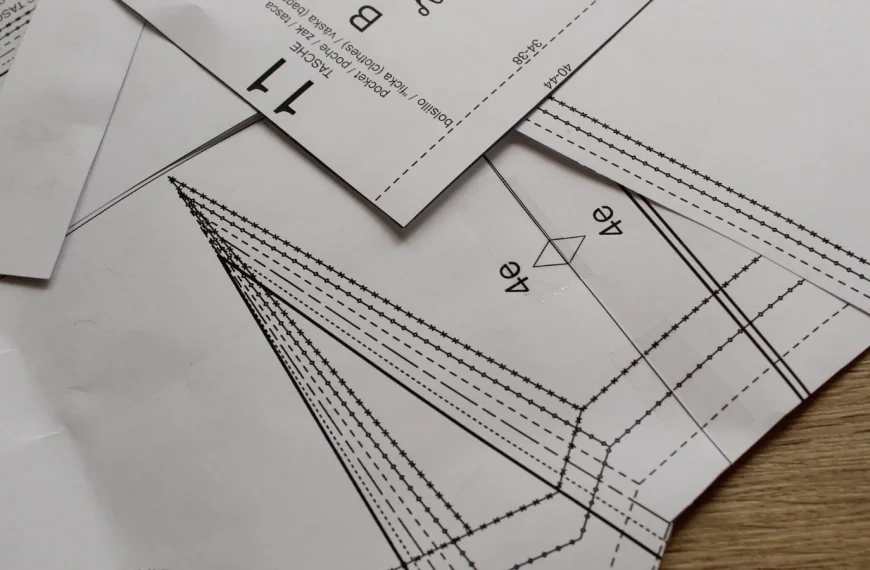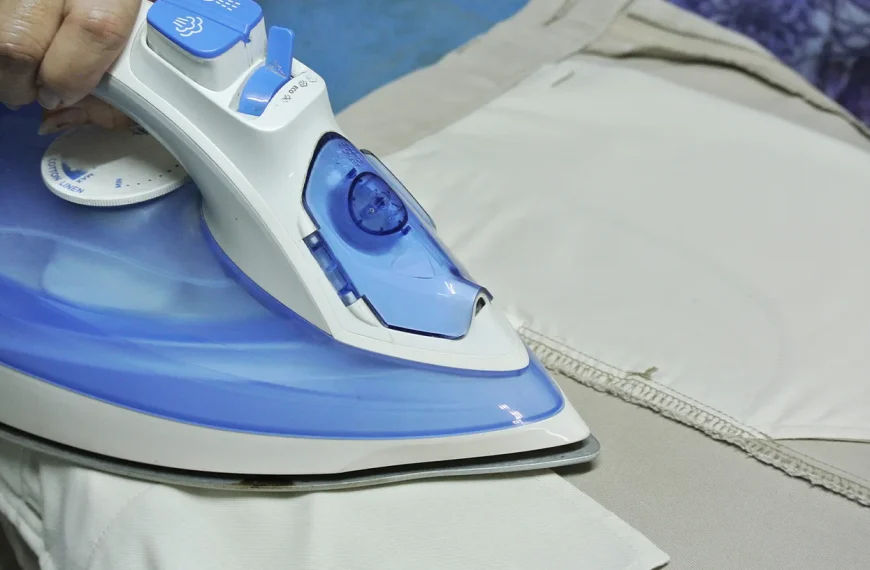Ever felt overwhelmed by the intricacies of how to use a sewing pattern? These guides are actually your secret weapon for creating stunning garments with ease. Our comprehensive guide demystifies sewing patterns, breaking down each step into digestible parts.
Ready for some clear-cut guidance? Let’s dive in!
What is a Sewing Pattern?
Before you learn how to use a sewing pattern, you should know what a sewing pattern is.
A sewing pattern serves as your blueprint for creating fabric items, including clothes. It’s usually made of paper and features detailed diagrams and instructions on how to construct a particular item.
The patterns come in different sizes, allowing for necessary adjustments to fit various body shapes. Essential details such as grainlines, seam allowances, and notches are marked clearly on the pattern.
Proper use of these templates can help bring your design ideas into reality with precision and style!
Related: LEARN HOW TO READ A SEWING PATTERN IN 4 SECTIONS LIKE AN EXPERT.
Different Sewing Pattern Formats
There are two main types of sewing pattern formats: paper and digital.
Long-standing pattern companies frequently produce paper patterns. They typically come printed on large sheets of tissue paper. You unfold them to reveal the markings used for cutting and constructing your garment from fabric.
Digital or PDF patterns have gained momentum with the rise of independent designers and the internet. They can be downloaded from websites onto your computer, which you then print at home on A4 or US letter sheets or at a copy shop on larger A0 sheets. Some even come as projector files that allow you to project the pattern straight onto your fabric. This way, you can eliminate paper waste entirely!
8 Steps on How to Use a Sewing Pattern
Since you’ve learned something basic, it’s time for you to know how to use a sewing pattern. Follow these 8 simple steps and start creating beautiful garments today!
Step 1: Read the Pattern Content
Look closely at the sewing pattern before starting. Pay attention to the different pieces and markings on them. Take note of any notches, darts, or lines that indicate folding. Read through the instructions carefully to understand how all the pieces come together.
Make sure you have a clear idea of what needs to be done before you begin cutting or sewing anything. This will help ensure that you follow the pattern correctly and avoid any mistakes along the way.
Remember to always double-check everything before proceeding with your project.
Step 2: Measure and Choose Your Right Size
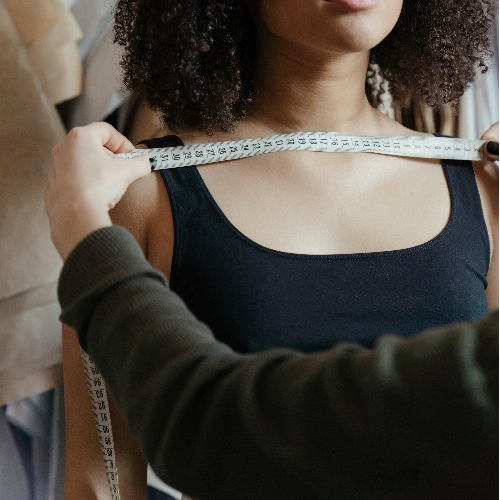
It’s crucial to measure and choose the right size when using sewing patterns. Sewing patterns come in different sizes, so you’ll want to select the size that matches your measurements. Make sure you choose the right size by referring to the measurement chart provided.
Keep in mind that fabric quantities may vary according to size, so picking the correct size before buying fabric is essential. Look for lengthening and shortening lines on the pattern. They indicate where adjustments can be made to accommodate different sizes.
Step 3: Gather the Necessary Materials
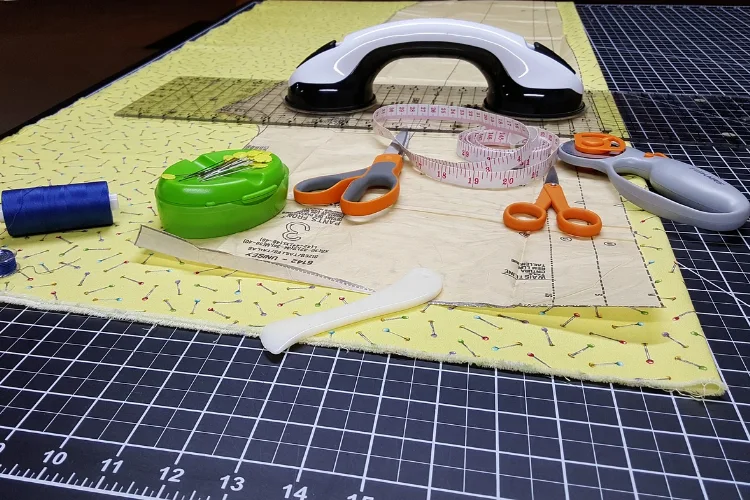
Before getting started, you will need to gather all the necessary materials.
Apart from fabrics, you will also need paper scissors or fabric shears for cutting the pattern and fabric, respectively. Don’t forget tailor chalk or an erasable pen for transferring pattern markings onto your fabric. Having these materials ready will ensure a smooth and successful sewing project.
Step 4: Print the Pattern (Optional)
If you’re using PDF or digital patterns, one of the steps is printing the patterns accurately. Take into consideration the direction of the fabric pattern and adjust your printing accordingly. Doing this can help you achieve precise placement and matching when cutting your fabric pieces.
Step 5: Cut the Pattern
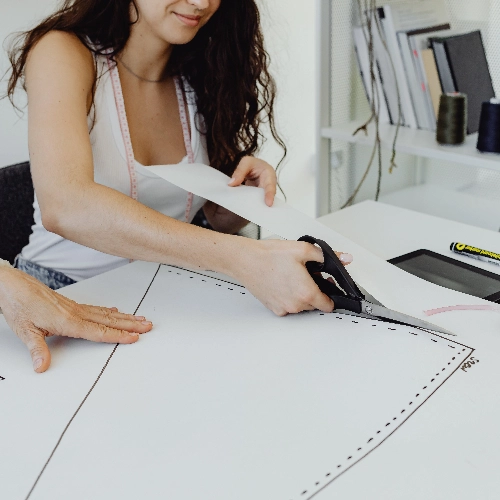
This step obviously means cutting the pattern pieces. The sewing pattern will have cutting plans that guide you on how to cut accurately. For beginners, just follow these instructions.
So take your time and carefully cut out each piece according to the pattern’s guidelines.
Step 6: Cut the Fabric
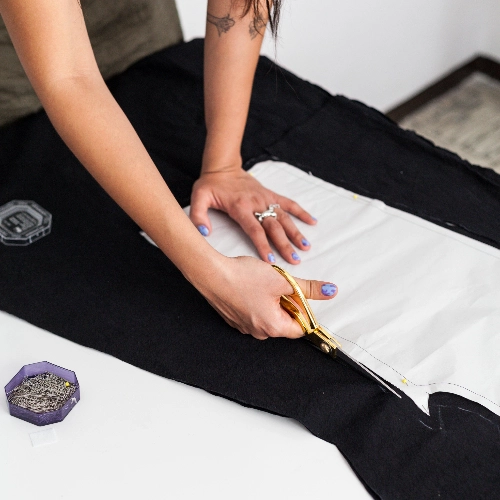
The pattern provides a cutting layout for how to cut each piece of fabric accurately. Lengthen or shorten lines on the pattern to adjust the size of the garment.
Make sure to mark buttonholes and button positions based on the pattern markings for proper placement. Additionally, when cutting the fabric, it’s important to consider pattern matching. You can align the direction of the pattern and cut each piece in the same direction.
This ensures a cohesive look once everything is sewn together.
Step 7: Transfer Pattern Markings
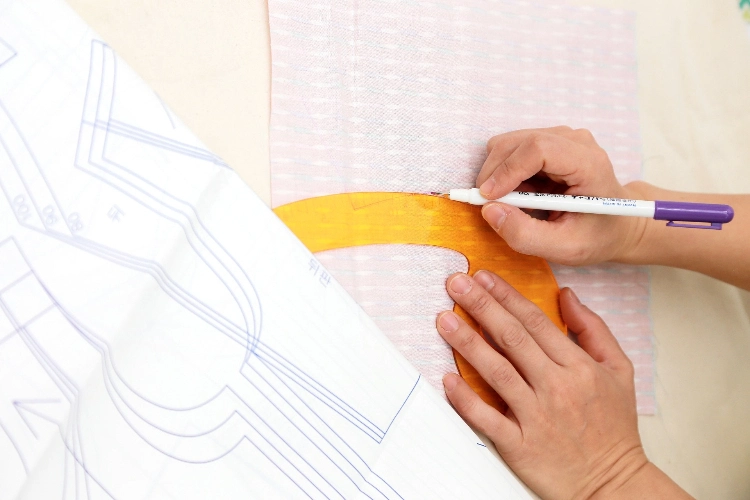
Transferring pattern markings is an essential step on how to use a sewing pattern. Snip the fabric edges to mark notches, fold lines, and center lines. You can use tailor’s chalk or an erasable pen to mark other details on the fabric.
If you plan to make modifications or sew in different sizes, it’s recommended to copy the pattern onto a new piece of paper. Remember, if you’re unsure about pattern alterations, seeking help from a tailor is always a good idea.
Step 8: Read and Follow the Instructions
The success of your sewing project relies heavily on your ability to read and follow the instructions provided in the sewing pattern. Sewing patterns often include helpful diagrams or illustrations to guide you along the way. Following these instructions will ensure that your handmade garment turns out as you envisioned it.
Remember that each sewing pattern is unique, so don’t assume that what worked for one pattern will work for another. Take the time to familiarize yourself with the specific instructions for each project.
Extra Sewing Tips on How to Use a Sewing Pattern
Understand Seam Allowances
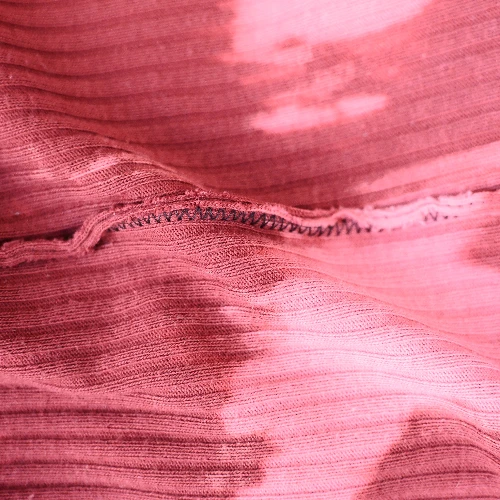
Seam allowances are the added edges to sewing patterns that allow for stitching and finishing seams. They can vary in width, typically ranging from 3/8 inch to 5/8 inch, depending on the pattern or project.
When using a sewing pattern, it’s important to check whether the seam allowances are already included or need to be added separately. Some patterns come with pre-drawn seam lines, while others require you to add them yourself.
Pattern Matching
Pattern matching is a crucial technique of how to use a sewing pattern. It helps you achieve a polished and professional-looking finished garment. By aligning the design on your fabric when cutting out pattern pieces, you can create a cohesive and visually appealing result.
When pattern matching, it’s important to consider the direction of the pattern on your fabric. Ensure that each pattern piece is cut in the same direction for accurate placement.
For fabrics with bold motifs, it may be best to avoid cutting pattern pieces on the fold. Alternatively, cut out each half separately and flip the pattern piece as needed. Keep in mind that achieving a perfect match on straight seams is relatively straightforward. But achieving an exact match on curved seams may not always be possible.
Choose the Right Fabric
Choosing the right fabric for your sewing project is an essential step on how to use a sewing pattern. Different styles of garments require specific qualities in terms of drape, body, or structure.
For lingerie and summer clothing, you need to consider a lightweight fabric like cheesecloth or chiffon. For dresses and tops, you need a medium-weight fabric such as cotton or linen. For more durable items like coats and jackets, heavy-weight fabrics like denim or tweed are preferable.
Understanding the characteristics of each type of fabric will help you make an informed decision. This decision can ensure your garment turns out just as you envisioned it.
Determine Fabric Quantity
Determining the right amount of fabric is also a crucial step. You want to ensure that you have enough fabric to complete your garment without any shortages or wastage.
Take note of the recommended fabric width mentioned in the pattern instructions. This will affect the quantity required. In addition, consider the size you’ll be making and whether there are any additional pattern pieces, like ruffles or sleeves, that may require more fabric.
It’s always a good idea to buy a little extra if you’re unsure, especially if you plan on doing any pattern matching or directional print placement. Taking these factors into account will help you make an accurate estimate and avoid any disappointments during the cutting and sewing process.
Conclusion
How to use a sewing pattern is an essential skill for beginner sewers. By following the step-by-step instructions, you can successfully create beautiful garments.
Remember to pay attention to important details like seam allowances and fabric quantities. With practice and patience, you’ll soon be on your way to becoming a confident sewer!
FAQs
Q: How do I choose the right sewing pattern?
A: When choosing a sewing pattern, consider your skill level, body measurements, and the style of the garment you want to create. Patterns usually have a skill level indicated on the packaging. It’s important to select one that matches your sewing abilities.
Q: How do I read a sewing pattern?
A: Reading a sewing pattern may seem overwhelming at first, but it becomes easier with practice. Start by familiarizing yourself with the pattern envelope. It contains important information such as sizing, fabric suggestions, and notions needed. Then, carefully read the instructions provided with the pattern. Pay attention to the diagrams, symbols, and measurements.
Q: How do I take accurate body measurements for sewing patterns?
A: To ensure a good fit, it’s important to take accurate body measurements. Use a flexible measuring tape and measure around the fullest part of your bust, waist, and hips. If the pattern requires it, measure your inseam, shoulder width, and arm length as well.
Q: What if I encounter difficulties while using a sewing pattern?
A: Sewing can be challenging, especially when using a pattern for the first time. If you encounter difficulties, don’t hesitate to seek help from experienced sewers. You can join sewing communities or forums, too. Or try to consult online tutorials and videos. Practice and patience are key to improving your sewing skills.
Q: What tools will I need to sew using patterns?
A: You’ll need various tools.
- Fabric scissors or a rotary cutter, along with a cutting mat for preparing fabric
- Tailor’s scissors for trimming seams
- Fabric shears for bulkier fabrics
- A tracing wheel and tracing paper for transferring any markings from your sewing pattern onto your fabric
Q: How do I store sewing patterns?
A: To keep your sewing patterns in good condition, consider storing them in plastic sleeves or ziplock bags to protect them from damage. You can also label the pattern envelopes with details such as size, date, and any modifications you make. Additionally, keep your patterns in a dry and cool place to prevent moisture and humidity from affecting them.





